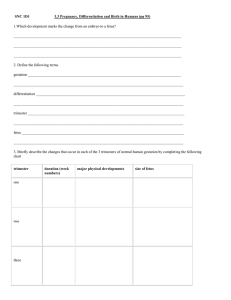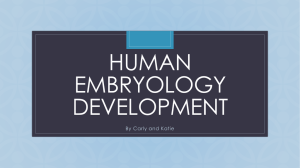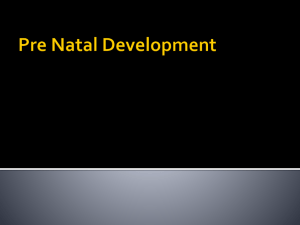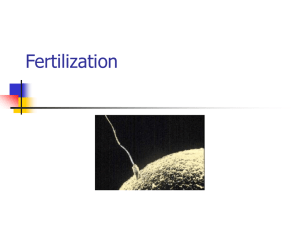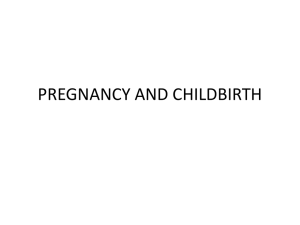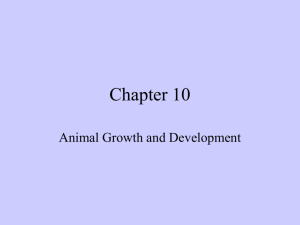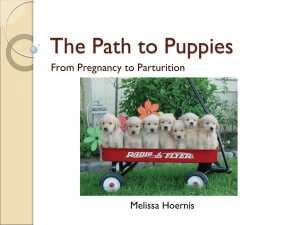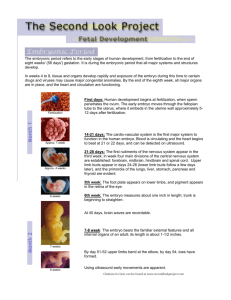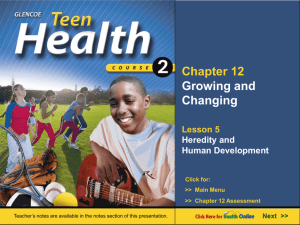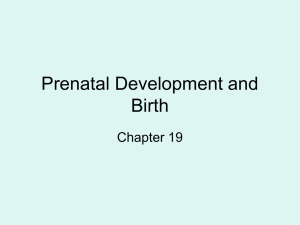Fertilization and Development
advertisement
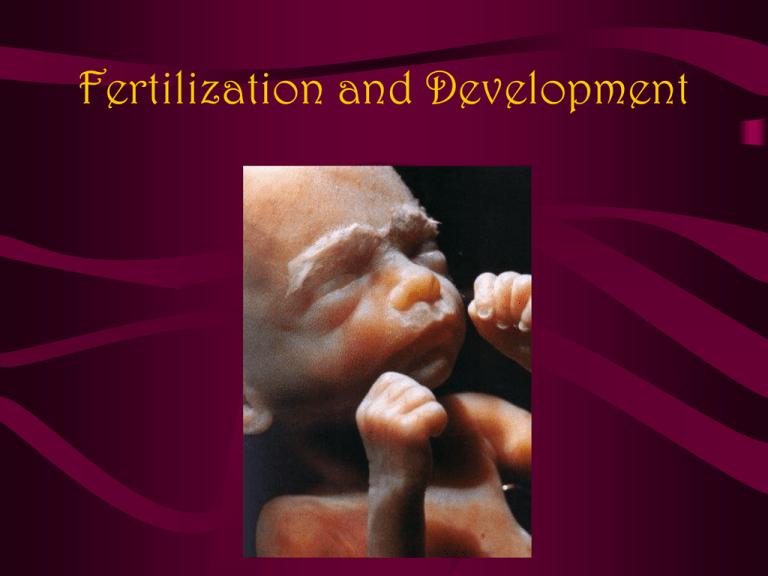
Fertilization and Development Step 1: Fertilization • Process of sperm fusing (joining) with an egg • Produces a zygote (fertilized egg, diploid cell) • In humans, this occurs in the oviduct External fertilization • Gametes fuse outside of the female’s body • Involves hormone/behavior controls • Involves the release of hundreds of gametes at the same time. Internal fertilization • Gametes fuse inside the female’s body • Advantage: no longer need to have part of life cycle attached to water • Requires specialized organs to deliver sperm into the female’s body Step 2: Mitotic Cell Division of the zygote to form embryo • During this time, the embryo is receiving nourishment from a small amount of stored yolk Step 3: Implantation • About 6-7 days after fertilization, the embryo embeds itself into the wall of the uterus Step 4: Development of the Placenta and Amnion Placenta • Organ made up of both mother’s and embryo’s blood vessels • Site of nutrient, oxygen, and waste exchange • Does NOT allow mother and embryo blood to mix rather, the nutrients and wastes DIFFUSE between the blood vessels • Acts a filter for SOME substances (alcohol, caffeine, some viruses CAN pass through) • Umbilical cord – attaches the embryo to the placenta. Is cut away after birth and the scar becomes the naval. Fetal Alcohol Syndrome • Group of disorders caused when a pregnant females consumes alcohol – Includes brain damage, stunted growth, learning disabilities, physical deformities – Most dangerous during first trimester (3 months) because the organs are DEVELOPING the most during this time period – Affects approx. 1 in 750 births (CDC) Amnion • Fluid filled sac that surrounds the embryo • Acts as a shock absorber and cushion to protect the developing fetus Step 5: Cellular Differentiation • As embryo grows, the cells begin to sort themselves into layers which give rise to various organs and organ systems • At specific times, each cell type begins to change in order to carry out its specific function After 8 weeks of development, the embryo is now called a FETUS. First Trimester • Up to week 12 • Organogenesis – development of body organs • Heart beats around week 4 • By week 8 all major structures of the adult are present in rudimentary form • At end, fetus is only 5cm long Second Trimester • Months 4-6 • Fetus grows about 30cm and is very active Third Trimester • Fetal activity decreases as it fills available space • Fetus is ~50 cm long • Lungs complete development Gestation (AKA Pregnancy) • In humans, this typically lasts 40 weeks • Premature birth – babies born prior to completing 37 weeks of development – Increase chance of lung and brain problems – Typically, the earliest survivable birth is 24 weeks Multiple Births • When more than one fetus is carried in the uterus in a single pregnancy period Monozygotic (Identical) Twins • One egg is fertilized and resulting zygote splits into two separate individuals • Offspring have IDENTICAL genetic information • Both twins will be the same gender Dizygotic (Fraternal) Twins • Where multiple sperm fertilized multiple eggs • Each offspring is unique in their genetic make up (no more closely related than any other 2 siblings) Labor and Delivery • Labor – series of rhythmic contractions of the uterus accompanied by changes in the cervix • Averages 8-13 hours, but can last longer • After the baby is removed, contractions continue to expel the AFTERBIRTH (placenta, amniotic sac, umbilical cord) Breech births • Fetus attempts to descent through the birth canal any way but head first – Results in Cesarean section Miscellaneous • Breastfeeding – characteristic that all mammals share – Controlled by hormones – Colostrum – first milk produced, contains ANTIBODIES and WBCs to give newborn limited immunity • Abortion – removal of embryo or fetus, reulting or causing its death • Miscarriage – natural or accidental termination of the pregnancy before 20 weeks (AKA Spontaneous abortion) • Stillbirth – when a fetus is >20 weeks and dies in uterus or during labor
